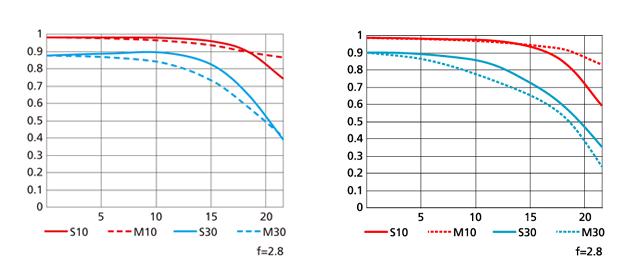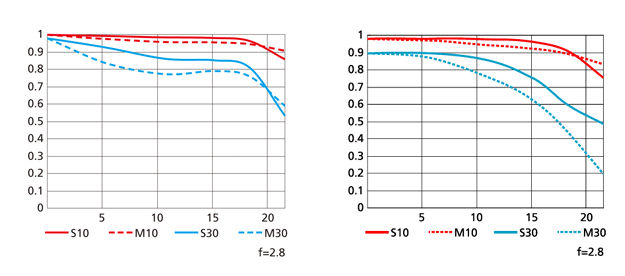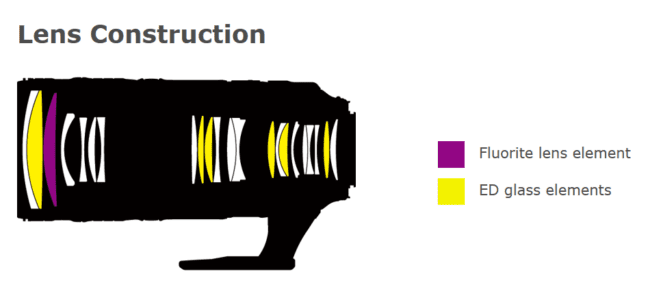Every seven to ten years, Nikon updates its top-of-the-line, flagship lenses with the most current technology and tries to push the performance envelope of new lenses to their new technical limits. We have been waiting for this update for a long time and Nikon finally delivered the new AF-S Nikkor 70-200mm f/2.8E FL ED VR. As expected, this lens looks absolutely stunning in every way. Nikon completely redesigned the lens from the ground up and delivered a true stunner – the new 70-200mm f/2.8 now features a fluorite element to make it roughly 100 grams lighter (which is a huge achievement for this type of a lens). The lens is now of “E” type with an electronic diaphragm, instead of the traditional mechanical lever to change aperture. Vibration Reduction / Image Stabilization has been reworked and vastly improved over its predecessor, with up to 4 stops of compensation. The lens is now comprised of a total of 22 elements, with all the latest coating technologies, including Nano and fluorine coating applied to lens elements, with lens optimized for incredible sharpness across the frame. And based on improvements towards maximum reproduction ratio, it looks like Nikon took efforts to significantly reduce the focus breathing issue that was present on the VR II version of the lens. All this does not come cheap though – the new Nikon 70-200mm f/2.8E FL ED VR will retail for $ 2,799.95 MSRP, which is $ 400 higher than what its predecessor sold at when it was announced.
Pushing performance even higher is already a challenge for a lens like the 70-200mm f/2.8, which has always been one of Nikon’s reference lenses. And it looks like Nikon did again manage to tweak the sharpness on the new 70-200mm f/2.8E VR compared to its predecessor. Take a look at the below MTF charts of the two at 70mm (Left: Nikon 70-200mm f/2.8E FL VR, Right: Nikon 70-200mm f/2.8G VR II):

Here, we can see that the new design is optimized towards yielding more even performance on the 70-200mm f/2.8E VR – the lens starts out a hair worse in the center, but look at how much better the lens looks outside the center frame. The lens looks vastly better in comparison to its predecessor there. Even the extreme edges look slightly better in comparison. Contrast is also improved on the new lens, with much more even performance, especially towards the edges of the frame.

When we look at the telephoto side of things, it appears that Nikon really put a lot of effort into making this lens shine at its longest focal length. At 200mm, the lens is remarkably good, with the sharpness curve approaching those of the exotic super telephoto lenses. Contrast is amazing from the center to the extreme edges of the frame, whereas sharpness is exceptional in the center and the mid-frame, with slightly diminishing performance towards the edges of the frame. And keep in mind – this is all at f/2.8! Imagine what kind of performance one can get out of this lens when stopped down to f/4-f/5.6 range…
I also expect the bokeh of the lens to be spectacular, not just based on the MTF, but also on the fact that the lens does not have a single aspherical lens element. While aspherical lenses significantly reduce spherical aberration, thus vastly improving sharpness, they are the cause of ugly onion-shaped bokeh on many lens designs. The new 70-200mm f/2.8E FL VR is designed to be a versatile lens that is highly desirable by portrait photographers, so Nikon will do its magic to make sure that the lens does not disappoint.
Here is the optical construction of the lens, which shows the single Fluorite lens element in front of the lens:
Now one potentially disappointing aspect of the lens design is the fact that using the fluorite lens element really did not shave much off the overall weight of the lens, which is something many of us were hoping to see – Nikon managed to only cut the overall weight of the lens by roughly 100 grams. However, one has to understand that such a complex lens with so many lens elements cannot have half of its lens elements comprised of fluorite glass. Typically, the front lens element is the one that gets replaced with a fluorite lens element, which is usually the biggest and the heaviest element on super telephoto lenses. That’s why we have seen significant weight savings on lenses such as the 400mm f/2.8E. On the 70-200mm, however, the front lens element is not what makes up the bulk of the weight of the lens – there are many more lens elements scattered throughout the lens and the lens barrel is made of heavy duty metal. If Nikon were to cut more weight from the lens, it would have to come out of the lens barrel, which would compromise the build quality of the lens. Personally, I would not want to buy a lens that would break in half the first time it is dropped. The 70-200mm f/2.8 is built to be a workhorse lens for busy pros and there cannot be any design compromises.
As with other latest generation lenses, the 70-200mm f/2.8E FL VR sports both Nano coating to reduce ghosting and flare, and fluorine coating to reduce dust and water drops from collecting on the front element.
Based on the fact that the maximum reproduction ratio has been increased almost back to what it used to be, it looks like the new 70-200mm f/2.8E FL VR will not have the same focus breathing problem as its predecessor – we should see far less of this effect, probably fairly close to what the original 70-200mm f/2.8G IF-ED VR used to be. I cannot confirm 100% that the lens will be completely free from focus breathing, but based on what I am seeing, it should be much more tolerable.
What I am not so sure about is the reversal of the focus and zoom rings. This will surely throw a lot of people off who are used to the traditional 70-200mm design and it might take time to get used to the new way to handle the lens. I’ll bet that, with the introduction of the fluorite lens element, the lens is no longer that front heavy, which might work out at the end, but that is something we still need to test and see. I hope it is not a deal breaker, since I would only want to handle the lens where the zoom ring is. Holding the lens by the focus ring might be a recipe for a disaster, since that might screw up focusing.
Overall, the 70-200mm f/2.8E FL VR looks really good, so I am hoping to test it as soon as it becomes available. At $ 2,800 it is not a cheap lens by any means, but let’s not forget that this lens is a money maker for many working professionals out there. If I were a busy wedding photographer, I would not hesitate to invest in such stellar glass.
Pre-Order Information
As usual, you can pre-order your copy of the Nikkor 70-200mm f/2.8E FL VR via our trusted partner B&H Photo Video:
The post Nikon 70-200mm f/2.8E FL ED VR Announcement appeared first on Photography Life.








